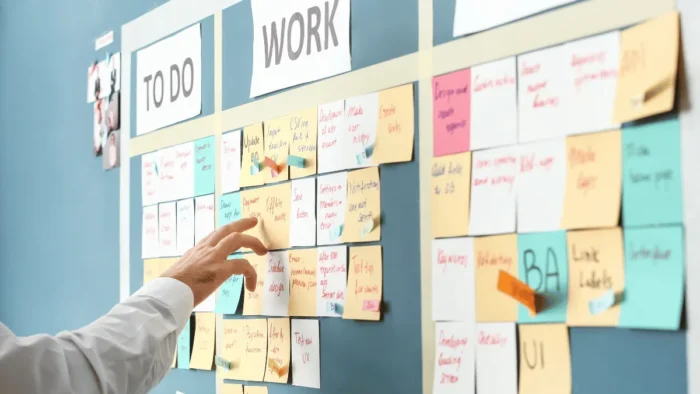Modern project management styles are taking the industry by storm. Scrum is a natural choice of the best framework for agile adoption. For those new to the world of agile development, the role of a Scrum Master can seem a bit mysterious. However, those with experience in this field know that Scrum Masters are critical in keeping projects on track and ensuring that teams can deliver high-quality software on time.
Unfortunately, even the most skilled and great Scrum Master sometimes makes mistakes that undermine their effectiveness. In this article, we’ll take a closer look at eight common mistakes that Scrum Master makes and provide some tips on how to avoid them. These insights can help you become a more effective leader and help your team achieve their goals because Scrum Master focuses on optimizing the processes that help teams meet their goals.
So let’s dive in and explore some of the most common mistakes that Scrum Masters make and how you can avoid them. But before we go into what Scrum Master should not do, let’s first explore what Scrum Master is.
Introduction to Scrum Framework
The History of the Framework
The history of the Scrum methodology dates back to the mid-1980s, starting with an article published in the Harvard Business Review by Hirotaka Takeuchi and Ikujiro Nonaka. In this piece titled “The New New Product Development Game,” they compared high-performing, cross-functional teams to a rugby scrum. This idea became the foundation for the framework.
The first full implementation of Scrum occurred in 1993 when Jeff Sutherland, John Scumniotales, and Jeff McKenna implemented it at Easel Corporation, a software company. They used the study by Takeuchi and Nonaka as a basis, adopting the concept of iterative, incremental development.
In 1995, Ken Schwaber and Jeff Sutherland introduced Scrum to the broader public at the OOPSLA conference in Austin, Texas. They presented a paper titled “SCRUM Software Development Process,” which outlined the methodology in detail.
The Agile Manifesto, a declaration of principles for software development under which requirements and solutions evolve through the collaborative effort of self-organizing and cross-functional teams, was introduced in 2001. Although the framework predates the Agile Manifesto, it aligns well with these principles and is considered a leading agile development methodology.
In 2002, Schwaber founded the Scrum Alliance, which offers training and certification for Scrum practitioners.
Today, Scrum is a popular framework organizations use worldwide to manage complex projects, particularly in software development. The framework has evolved over the years, but the core principles remain the same – creating a collaborative environment where teams can address complex problems and deliver high-value products.
What is a Scrum Framework?
Scrum is a flexible, agile framework for managing complex projects, often used in software development. It emphasizes teamwork, iterative progress, and customer value delivery.
Scrum Roles
Three essential roles collaborate to produce a high-quality product increment within each Sprint. These roles are:
- Product Owner (PO): The Product Owner is the key stakeholder in the project with a vision of what they want to build. Their role is to clearly express and prioritize this vision in the form of a Product Backlog.
- Scrum Master (SM): The role of a Scrum Master is to be a servant-leader for the Scrum Team, helping everyone understand Scrum theory, practices, rules, and values. They facilitate communication, remove obstacles, and help the team deliver high-value increments. They also work with the Product Owner to maximize productivity by reducing backlog refinement and helping to manage the Product Backlog.
- Development Team (DT): The DT consists of professionals who deliver potentially releasable increments of “Done” products at the end of each Sprint. Development Teams are self-organizing, cross-functional, and accountable for delivering the Sprint Goal. They decide how to accomplish the work set forth by the Product Owner.
It’s important to note that these roles are not job titles but are roles that individuals fulfill while working on a Scrum project. A person can have a job title like “Software Engineer” or “QA Tester” but fulfill the role of a member of the DT within a Scrum project.
Key Activities
The framework recognizes four key activities:
- Sprint Planning: This is where the team decides on the work to be done during the upcoming Sprint (a set period, typically 2-4 weeks).
- Daily Scrum: A daily Scrum meeting lasts 15 minutes for the DT to synchronize activities and create a plan for the next 24 hours.
- Sprint Review: Held at the end of the Sprint, the team inspects the Increment and adapts the Product Backlog if needed.
- Sprint Retrospective: This is a meeting after the Sprint Review and before the next Sprint Planning, where the team reflects on the past Sprint with the aim of continuous improvement.
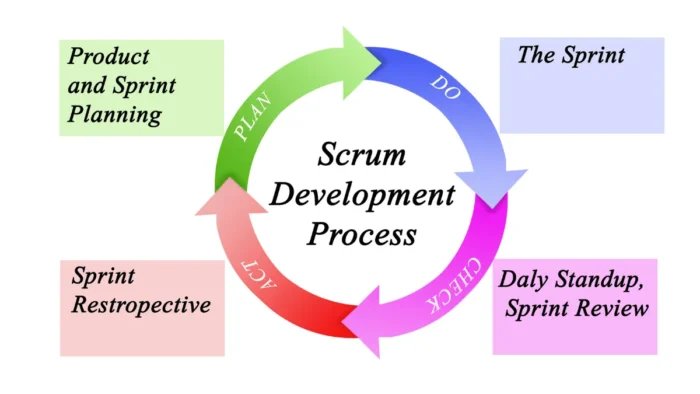
Related: Meeting Minutes Tools You Can Use in Your Company
Artifacts
In the framework, artifacts are vital tools that provide transparency and opportunities for inspection and adaptation. They represent work or value and provide critical information to the Scrum Team and stakeholders. There are three primary artifacts in Scrum:
- Product Backlog: This is an ordered list of everything known to be needed in the product, and it’s the single source of requirements for any changes to be made to the product. The Product Owner is responsible for the Product Backlog, including its content, availability, and ordering. It evolves as the product and the environment in which it will be used evolves.
- Sprint Backlog: The Sprint Backlog is a set of items from the Product Backlog selected for the Sprint, plus a plan for delivering them. It’s a forecast by the Development Team about what functionality will be made available in the next Increment and the work needed to provide that functionality.
- Increment: The Increment is the sum of all the Product Backlog items completed during a Sprint and the value of the increments of all previous Sprints. At the end of a Sprint, the new Increment must be “Done,” which means it must be in a useable condition and meet the Scrum Team’s definition of “Done.”
These artifacts are designed to maximize the transparency of essential information so that everybody has the same understanding of what is being worked on and how close it is to being done.
What is a Scrum Master and Their Responsibilities?
Before diving into the common mistakes that a Scrum Master can make, it’s essential to understand what a Scrum Master is and what their responsibilities are.
The Scrum Master is a facilitator for the Scrum team and ensures that the team adheres to the Scrum framework. The Scrum Master is responsible for helping the team to understand and embrace Scrum values, practices, and rules. They also promote and support continuous improvement of the team and the processes used to deliver software.
The Scrum Master is not a manager but a servant leader who helps the team self-organize and self-manage. He is responsible for removing impediments that may restrict the team from achieving their goals. This could involve anything from removing distractions to negotiating with stakeholders to ensure the team has the necessary resources. The Scrum Master is also responsible for ensuring that the Scrum team’s progress is transparent and visible to all stakeholders.
One crucial aspect is ensuring the smooth execution of all Scrum events, fostering a positive and productive atmosphere between Scrum team members. By overseeing these essential components, the Scrum Master is pivotal in facilitating effective collaboration and maximizing the team’s efficiency.
Common Mistake #1: Not Understanding the Scrum Framework
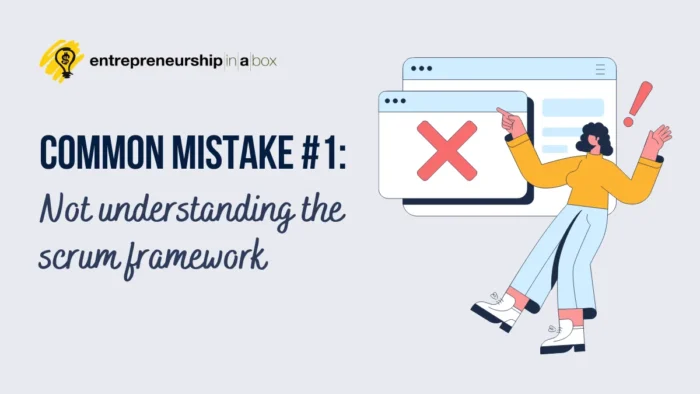
One common mistake that Scrum Master can make is not understanding the framework. Scrum is a complex framework involving several different practices and roles. Scrum Masters must deeply understand the framework to effectively facilitate the Scrum process.
When a Scrum Master does not understand the framework, they may struggle to answer questions from the team or be unable to effectively facilitate Scrum meetings. This can lead to confusion and frustration among team members, undermining the Scrum team’s effectiveness.
To avoid this mistake, Scrum Masters should invest time learning and understanding the framework. They should read the Scrum Guide and other relevant resources and attend training courses. They should also seek feedback from the team to ensure they effectively facilitate the Scrum process.
Common Mistake #2: Behaving Like a Project Manager
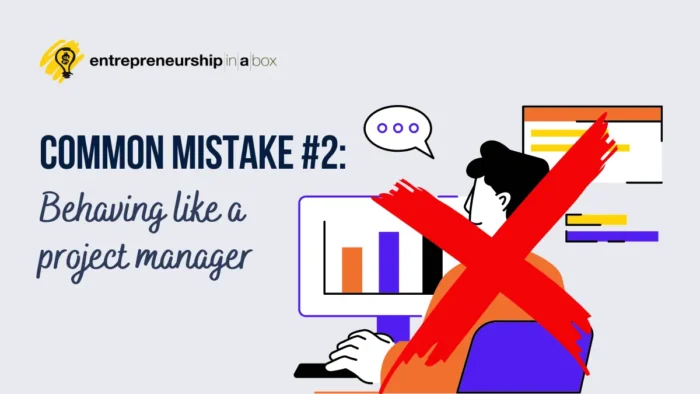
Scrum Master often has to keep an eagle eye on the team members. But their role should not be confused with that of a project manager. They must be actively involved in daily stand-ups and retrospectives and ensure that each team member has done their part well. It is also the responsibility of the Scrum Master to ensure that quality, shippable solutions can be delivered after each Sprint.
Scrum is an agile framework that is based on the principles of self-organization and self-management. Unlike traditional project management, Scrum does not involve a central authority figure who directs the team’s work. Instead, the team is empowered to decide how to achieve their goals.
Although the Scrum Master has to lead the team in many ways, he should never have a commanding mentality, as Scrum is never about control. He need not dictate efforts and assign tasks. He is a leader in self-organizing Scrum teams. They become better by making mistakes and learning from them.
The team members’ opinions should be considered during daily stand-ups and retrospectives without dominating them. The Scrum Master should also take their suggestions for the next task without directly assigning them to work so they can use their full potential.
When a Scrum Master behaves like a project manager, they may be perceived as micromanaging the team. This can lead to a loss of trust and respect from the team, undermining the Scrum team’s effectiveness. Scrum Masters need to remember that they are not managers but rather facilitators. They should focus on enabling the team to self-organize and self-manage rather than directing their work.
To avoid this mistake, Scrum Master should focus on facilitating the Scrum process rather than managing the team. They should encourage the Scrum team to take ownership of their work and make decisions collectively. They should also be available to provide guidance and support when needed but should avoid directing the team’s work.
Common Mistake #3: Checking Up Too Frequently

Another common mistake that Scrum Masters make is checking up too frequently.
Checking up on team members too frequently can make a Scrum Master appear as a bad leader. This can lead to anger among members and ruin relations creating a bad image of the Scrum Master in the eyes of the members. A Scrum Master should avoid it as analyzing their work frequently can be comprehended as a situation of distrust among the Scrum team. Follow-ups should be on a timely basis, as described by Scrum.
A Scrum Master should have trust in his Scrum team and consider the team members as their partners and not as their workers. Giving them more space will help them be free and represent themselves better in their field. They are responsible for their work, which leads to better productivity. Scrum Masters should chat with them informally about the project and guide them to success.
To avoid this mistake, Scrum Masters should focus on empowering the team to self-organize and self-manage. They should provide guidance and support when needed but should avoid checking up too frequently.
Common Mistake #4: Not Adapting to Change
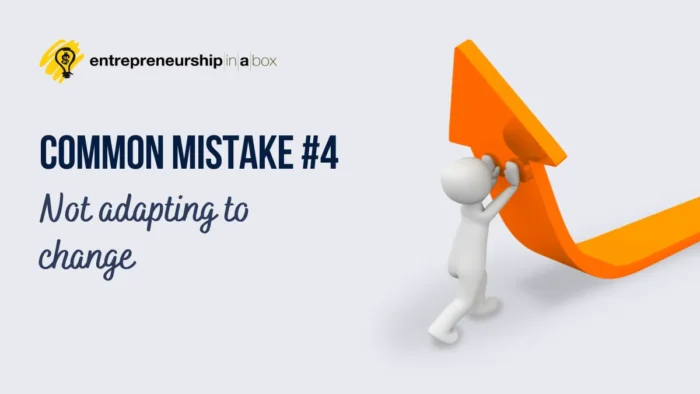
Agile and Scrum are known for supporting changes and implementing them. But if these changes are not recognized on time, it can lead to a lot of trouble with stakeholders, the product owners, and the organization. Getting regular updates is necessary to track these changes and implement them.
A daily stand-up should never cross fifteen minutes. Generally, the time allotted exceeds when the team members discuss the technical difficulties. Scrum Masters should make themselves at home with recurring changes and stay current with the project.
Scrum is an agile framework that enables teams to respond to change quickly and effectively. When a Scrum Master does not adapt to change, they may struggle to keep the team on track or miss significant opportunities.
To avoid this mistake, Scrum Masters should be flexible and adaptable. They should embrace change and be willing to adjust the Scrum process as needed. They should also communicate any changes to the team and seek feedback to ensure they are effective.
Common Mistake #5: Solitary Decision Making

A unilateral solution for a team project may make the team members furious and lose focus on the project, as such decisions have a misguided impact. Instead of going for these self-made decisions, it is crucial to consider the opinions of every team member to arrive at the best possible decision.
The scrum team should input their suggestions and feedback to the scrum master during every scrum ceremony. It is the scrum master’s responsibility to make sure that every member’s voice is heard. Their opinions matter the most, and this is what sets Agile apart.
Scrum is based on the principles of collaboration and teamwork, meaning the team should make decisions collectively. When a Scrum Master makes decisions in isolation, he may not consider the team’s perspectives and ideas, which can lead to suboptimal outcomes.
To avoid this mistake, Scrum Masters should focus on facilitating collaboration and teamwork. They should encourage the team to share ideas and perspectives and ensure that decisions are made collectively. They should also be open to feedback and willing to adjust their approach based on the team’s needs.
Common Mistake #6: Overcomplicating or Oversimplifying

Adaptability is the key in Scrum. It is essential to start small, think big, and aim high. The concept of Sprints in Scrum is to start simple and add mature practices and complexity as the project progresses. In short, complexity matures when the team grows.
Even if Scrum is flexible, the Scrum Master can’t loosen up or oversimplify processes too much. Complexities can be managed by setting up practices and following them. These can be modified but not ignored when they become restrictive.
Common Mistake #7: Being The Sole Point of Contact

The Scrum Master is often used as the sole point of contact between the product owner and the development team, which is a common mistake. This affects the quality of communication and the terms between the stakeholders and the development team. A product owner should be actively involved rather than passing information to the Scrum Master to ensure the project best suits user requirements.
A Scrum Master should facilitate but not resolve processes, and if the product owner conveys the user stories to the development team, a Scrum Master does not have to get the answers to help the team resolve this issue.
Common Mistake #8: Not Facilitating Effective Scrum Meetings

Another common mistake that a Scrum Master makes is not facilitating effective Scrum meetings. Scrum meetings, such as the daily stand-up, sprint planning, sprint review, and sprint retrospective, are critical to the success of the Scrum process. When these meetings are not effective, it can lead to confusion, frustration, and a lack of progress.
To avoid this mistake, Scrum Master should learn how to effectively facilitate Scrum meetings. They should ensure that the meetings are focused, productive, and engaging. They should also seek feedback from the team to ensure that the meetings meet their needs.
Tools and Resources for Scrum Masters

There are a number of tools and resources available to Scrum Masters to help them effectively facilitate the Scrum process. Some popular tools and resources include:
- Scrum Guide: The official guide to Scrum, published by the creators of Scrum. The guide provides the definitive rulebook on how to implement Scrum correctly.
- Scrum.org: This site is a comprehensive resource offering a variety of materials, including the Scrum Guide, assessments, training, and a community of Scrum practitioners.
- Agile Alliance: A global nonprofit organization promoting Agile software development concepts that provide learning, networking, and collaboration resources.
- Agile Manifesto: The foundational document of agile software development, which outlines the values and principles of the agile approach.
- CSM course will also help boost your credibility and enhance your skills as a Scrum Master.
- Project management tools: You can use Trello, an easy-to-use, flexible, and visual way to manage your projects and organize anything. It’s often used for agile project management. Also, Jira Software is a project management tool designed specifically for Agile teams. It helps with planning, tracking progress, releasing software, and reporting.
- Communication tools: Slack is a chat tool that improves communication within teams. It can be integrated with other tools like Jira and Trello. Zoom is a video conferencing tool that can be used for daily scrums, sprint planning, review, and retrospective meetings.
Conclusion
Scrum Masters can help their teams achieve their goals and deliver high-quality software on time. A Scrum Master’s role is irreplaceable in a Scrum Team. Make sure that you stay away from these mistakes to have a smooth Sprint.

